Choose the Right Saw Blade Size
Looking for the perfect fit? Check Out These Best-Selling Saw Blade.
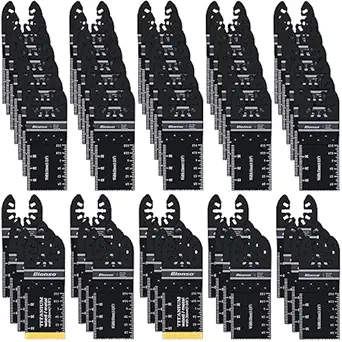
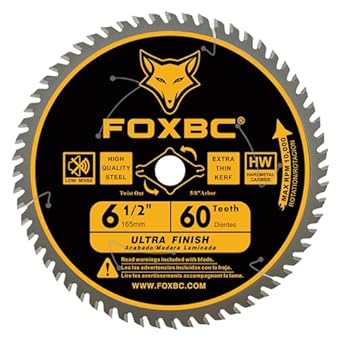
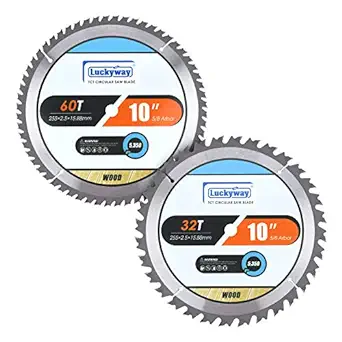
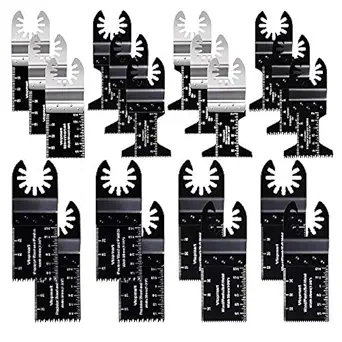
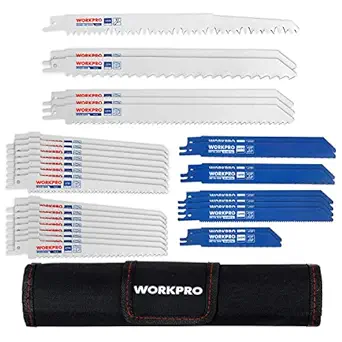
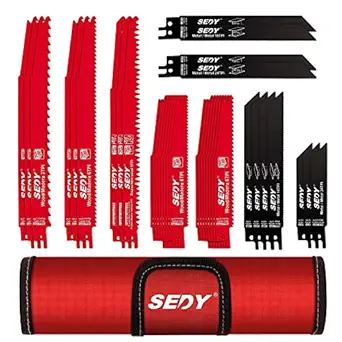
Saw Blade Size Chart – Understanding the Right Blade for Your Cutting Needs
When it comes to woodworking, construction, and DIY projects, choosing the right saw blade is as important as selecting the right saw. A high-quality saw blade can make all the difference in the quality, speed, and precision of your cuts. But with so many types of saw blades available in the market, it can be confusing to understand which one is best suited for your specific cutting task.
One of the most crucial factors in choosing a saw blade is the blade size. The right blade size influences how the saw performs, how easy it is to control, and how cleanly it cuts through materials. In this guide, we’ll break down the various saw blade sizes, explain how to choose the best size for different types of cuts, and provide you with a helpful saw blade size chart to make your decision easier.
What is a Saw Blade Size?
The size of a saw blade refers to the diameter of the blade, typically measured in inches. The blade size is essential for determining the types of cuts a saw can make, the materials it can cut, and the overall performance of the saw. Along with the diameter, other factors, such as the tooth count and kerf thickness, also affect the blade’s cutting ability.
Blade size is particularly important because:
- Larger blades are used for cutting through thicker or tougher materials, and they can usually cut deeper.
- Smaller blades are used for precise, shallow cuts and are often more suitable for delicate materials or smaller projects.
Choosing the right saw blade size depends on the specific project you’re working on. In this article, we’ll explore common saw blade sizes, their uses, and how to choose the best blade for your needs.
Types of Saw Blades and Their Sizes
There are several types of saw blades designed for different tasks, each with varying sizes and features. Here’s a breakdown of the most commonly used saw blades and their ideal sizes:
1. Circular Saw Blades
Circular saw blades are some of the most versatile blades available. They can be used for a wide variety of materials, from wood and plastic to metal and masonry, depending on the blade type.
- Common Blade Sizes: 4-1/2 inches to 7-1/4 inches
- Typical Uses: Circular saw blades are typically used for straight cuts in wood, plywood, MDF, and other materials. The size of the blade affects the cutting depth. A 7-1/4-inch blade is common for most DIY and construction projects because it provides a good balance between power and precision.
- Smaller Blades (4-1/2″ to 5-1/2″): These blades are used for smaller, lighter tasks such as cutting thin wood, trim, or small pieces of metal. They also provide a more precise cut for detailed work.
- Larger Blades (7-1/4″ and above): These are more suitable for heavier duty tasks like cutting through thick wood, plywood, and even thicker materials like MDF.
2. Table Saw Blades
Table saw blades are designed for precision cuts on larger workpieces. They’re typically used in woodworking shops for cutting wood, plywood, and MDF.
- Common Blade Sizes: 10 inches and 12 inches
- Typical Uses: Table saw blades are typically used for crosscuts, rips, and miter cuts. The size of the blade dictates how deep the cut will be.
- 10-inch Blades: The most common size for table saws. These blades offer a good balance of cutting capacity and cutting speed, and they can handle most materials up to 3 inches thick.
- 12-inch Blades: These larger blades allow you to make deeper cuts and can handle thicker materials, but they can be harder to control for beginners.
3. Miter Saw Blades
Miter saw blades are used primarily for making precise crosscuts and miter cuts in wood, trim, and other materials. They’re typically used in construction and woodworking for projects such as framing, molding, and trim work.
- Common Blade Sizes: 10 inches, 12 inches, 14 inches
- Typical Uses: Miter saw blades are ideal for cutting angles and precise crosscuts. The blade size affects how deep the saw can cut and how precise the cuts are.
- Smaller Blades (10 inches): These are ideal for cutting smaller stock, trim, and baseboards. They are also more lightweight and easier to control.
- Larger Blades (12 inches and 14 inches): These larger blades allow for deeper cuts in thicker material and are great for larger projects, such as cutting thicker beams or planks.
4. Jigsaw Blades
Jigsaws are handheld power tools that allow you to make curved or straight cuts in wood, metal, or plastic. Jigsaw blades come in various lengths and styles for different materials.
- Common Blade Sizes: 4 inches to 6 inches (length of the blade)
- Typical Uses: Jigsaw blades are ideal for cutting intricate curves and tight corners in materials like wood, plastic, and metal. Jigsaws are versatile and can be used for both straight and curved cuts.
- Smaller Blades (4-5 inches): These are perfect for detailed work or cutting through thin materials like sheet metal, plastic, and plywood.
- Larger Blades (6 inches): These blades are used for cutting through thicker materials or for tasks that require a longer stroke length.
5. Reciprocating Saw Blades
Reciprocating saw blades (also known as Sawzall blades) are used for cutting through a variety of materials, such as wood, metal, and even concrete. These blades are typically used in demolition work and other heavy-duty tasks.
- Common Blade Sizes: 4 inches to 12 inches (length of the blade)
- Typical Uses: Reciprocating saw blades are designed for rough cuts, such as cutting pipes, branches, or demolition tasks. These blades are used primarily for straight cuts and cutting through tough materials.
- Smaller Blades (4-6 inches): These are perfect for smaller tasks and provide better control for narrow cuts.
- Larger Blades (8-12 inches): These blades can handle thicker materials and are ideal for tasks that require longer strokes and more aggressive cuts.
6. Band Saw Blades
Band saw blades are used for cutting through wood, metal, plastic, and even meat in industrial settings. They have continuous, looped blades that provide smooth, precise cuts.
- Common Blade Sizes: 1/4 inch to 1 inch (width), with lengths varying depending on the band saw model
- Typical Uses: Band saw blades are used for curved cuts, resawing, and precision cuts. The blade size can affect the tightness of the curves and the type of material that can be cut.
- Narrower Blades (1/4 inch to 1/2 inch): These blades are ideal for making tight curves and intricate cuts in wood and soft metals.
- Wider Blades (1/2 inch to 1 inch): These blades are used for straight cuts and resawing thicker stock.
How to Choose the Right Saw Blade Size
Choosing the right saw blade size depends on several factors, including the type of saw, the material being cut, and the depth of the cut. Here are some general guidelines to help you select the right saw blade size:
- Consider the Material:
- For wood and soft materials, a smaller blade is often sufficient for most tasks.
- For thicker or harder materials, a larger blade is required to provide deeper cuts and more power.
- Think About the Depth of Cut:
- Larger blades can cut deeper, so if you’re working with thicker materials, choose a larger diameter blade.
- Understand the Cut Type:
- Crosscuts and rip cuts usually require larger blades, while precision cuts and detailed work can be done with smaller blades.
- Check Your Saw’s Compatibility:
- Always make sure the saw blade you choose is compatible with your saw’s specifications. The blade size must match the saw’s mounting arbor and maximum blade capacity.
Saw Blade Size Chart
Below is a handy saw blade size chart that outlines common saw blade types, their sizes, and their recommended uses:
| Saw Blade Type | Common Size | Recommended Use |
|---|---|---|
| Circular Saw Blade | 4-1/2″ to 7-1/4″ | General cutting of wood, plywood, and other materials. |
| Table Saw Blade | 10″ to 12″ | Precision cuts in wood and thick materials. |
| Miter Saw Blade | 10″ to |
Conclusion
Choosing the right saw blade size is crucial for achieving precise, efficient cuts. Whether you’re cutting wood, metal, plastic, or other materials, understanding the different saw blade sizes and their applications will help you get the best results for your project. The saw blade size chart provided above will give you a quick reference guide for selecting the right blade for your needs.
By keeping in mind the material, cutting depth, and saw compatibility, you can ensure that you’re using the correct saw blade size for the job at hand. When in doubt, always choose a blade size that offers a good balance of cutting power and precision for the best results.
